MFN2 suppresses the accumulation of lipid droplets and the progression of clear cell renal cell carcinoma
- PMID: 38480904
- PMCID: PMC11145141
- DOI: 10.1111/cas.16151
MFN2 suppresses the accumulation of lipid droplets and the progression of clear cell renal cell carcinoma
Abstract
Dissolving the lipid droplets in tissue section with alcohol during a hematoxylin and eosin (H&E) stain causes the tumor cells to appear like clear soap bubbles under a microscope, which is a key pathological feature of clear cell renal cell carcinoma (ccRCC). Mitochondrial dynamics have been reported to be closely associated with lipid metabolism and tumor development. However, the relationship between mitochondrial dynamics and lipid metabolism reprogramming in ccRCC remains to be further explored. We conducted bioinformatics analysis to identify key genes regulating mitochondrial dynamics differentially expressed between tumor and normal tissues and immunohistochemistry and Western blot to confirm. After the target was identified, we created stable ccRCC cell lines to test the impact of the target gene on mitochondrial morphology, tumorigenesis in culture cells and xenograft models, and profiles of lipid metabolism. It was found that mitofusin 2 (MFN2) was downregulated in ccRCC tissues and associated with poor prognosis in patients with ccRCC. MFN2 suppressed mitochondrial fragmentation, proliferation, migration, and invasion of ccRCC cells and growth of xenograft tumors. Furthermore, MFN2 impacted lipid metabolism and reduced the accumulation of lipid droplets in ccRCC cells. MFN2 suppressed disease progression and improved prognosis for patients with ccRCC possibly by interrupting cellular lipid metabolism and reducing accumulation of lipid droplets.
Keywords: Hif2α; MFN2; clear cell renal cell carcinoma; lipid droplets; mitochondrial fusion.
© 2024 The Authors. Cancer Science published by John Wiley & Sons Australia, Ltd on behalf of Japanese Cancer Association.
Conflict of interest statement
The authors have no conflict of interest.
Figures


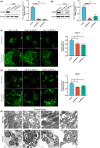
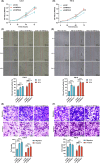
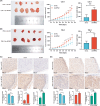

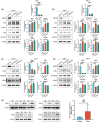
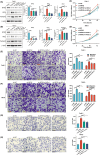
Similar articles
-
MFN2 suppresses clear cell renal cell carcinoma progression by modulating mitochondria-dependent dephosphorylation of EGFR.Cancer Commun (Lond). 2023 Jul;43(7):808-833. doi: 10.1002/cac2.12428. Epub 2023 Jun 28. Cancer Commun (Lond). 2023. PMID: 37378422 Free PMC article.
-
MT1G induces lipid droplet accumulation through modulation of H3K14 trimethylation accelerating clear cell renal cell carcinoma progression.Br J Cancer. 2024 Sep;131(4):641-654. doi: 10.1038/s41416-024-02747-y. Epub 2024 Jun 21. Br J Cancer. 2024. PMID: 38906969 Free PMC article.
-
Up-regulation of SR-BI promotes progression and serves as a prognostic biomarker in clear cell renal cell carcinoma.BMC Cancer. 2018 Jan 22;18(1):88. doi: 10.1186/s12885-017-3761-z. BMC Cancer. 2018. PMID: 29357836 Free PMC article.
-
Fatty acid metabolism reprogramming in ccRCC: mechanisms and potential targets.Nat Rev Urol. 2023 Jan;20(1):48-60. doi: 10.1038/s41585-022-00654-6. Epub 2022 Oct 3. Nat Rev Urol. 2023. PMID: 36192502 Free PMC article. Review.
-
Lipid metabolism reprogramming in renal cell carcinomas.Med Oncol. 2024 Sep 6;41(10):243. doi: 10.1007/s12032-024-02484-5. Med Oncol. 2024. PMID: 39240415 Review.
Cited by
-
Machine Learning-Based Pathomics Model to Predict the Prognosis in Clear Cell Renal Cell Carcinoma.Technol Cancer Res Treat. 2024 Jan-Dec;23:15330338241307686. doi: 10.1177/15330338241307686. Technol Cancer Res Treat. 2024. PMID: 39703069 Free PMC article.
-
Endosomal RFFL ubiquitin ligase regulates mitochondrial morphology by targeting mitofusin 2.J Cell Sci. 2025 Jun 15;138(12):jcs263830. doi: 10.1242/jcs.263830. Epub 2025 Jun 20. J Cell Sci. 2025. PMID: 40444323 Free PMC article.
-
Response of Primary Human Adipocytes to Fatty Acid Treatment.J Cell Mol Med. 2025 May;29(10):e70622. doi: 10.1111/jcmm.70622. J Cell Mol Med. 2025. PMID: 40418213 Free PMC article.
-
Bavachin ameliorates cisplatin-induced nephrotoxicity by enhancing mitochondrial β-oxidation and lipid metabolism through MFN2.Mol Med. 2025 Jun 11;31(1):234. doi: 10.1186/s10020-025-01283-6. Mol Med. 2025. PMID: 40500698 Free PMC article.
-
The Current State of the Diagnoses and Treatments for Clear Cell Renal Cell Carcinoma.Cancers (Basel). 2024 Dec 1;16(23):4034. doi: 10.3390/cancers16234034. Cancers (Basel). 2024. PMID: 39682220 Free PMC article. Review.
References
MeSH terms
Substances
Grants and funding
- 202201020379/Guangzhou Key Laboratory of Biological Targeting Diagnosis and Therapy
- 2023C-TS50/Characteristic Technology Project of Guangzhou Municipal Health Commission
- 2022/Key Clinical Specialty Project of Guangdong Province
- 2024A03J0074/Guangzhou Municipal Science and Technology Project
- 2021KSYS009/Key Laboratory of Guangdong Higher Education Institutes
LinkOut - more resources
Full Text Sources
Medical

